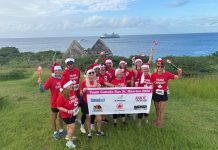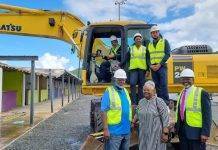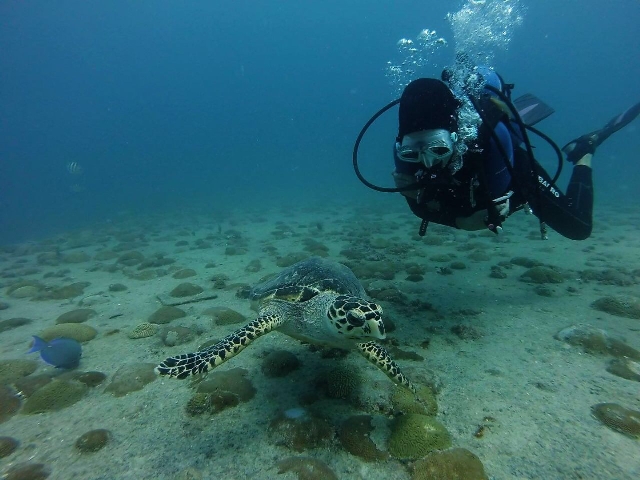PHILIPSBURG, Sint Maarten — Due to Hurricane Irma causing significant damage to underwater life because of storm surge and strong water motion, the Sint Maarten Nature Foundation conducted initial Marine Park and Dive Site assessment to determine the level of impact underwater. Initial marine assessment was carried out from the 28th of September until the 6th of October 2017.
Several St Maarten dives sites in the Man of War Shoal Marine Park and around the island have been surveyed for reef and coral damage, marine life presence and to assess the mooring systems for dive operators. The Nature Foundation will start in depth reef monitoring in the coming weeks to determine detailed impacts.
Hurricane Irma impacted St Maarten reefs severely; large coral and sponge die offs have been recorded, especially in the lower parts of the reef. Shallower dive sites experienced direct major damage to branching corals such as Elkhorn coral (Acropora palmata). Large coral fragments have been broken off. The large and branching growth form of Elkhorn corals makes them vulnerable to strong water motions and surge.
Major indirect impacts are found on the reef and to corals due to sediment and sand cover. The strong surge and water motion of hurricane Irma caused sand and sediment to move over the reef and cover mainly deeper sections and mainly coral and sponges show large die offs. Rapid assessment s have estimated a 30% die off of the reef due to sediment cover and a total of 50% of the reef being affected by Irma generally. Especially in the Man of War Shoal Marine Park turf algae and macro algae have been ripped off the reef due to the strong surge underwater. Turf algae are the main food source for several reef fish and the disappearance could impact fish stock negatively.
Seagrass beds around the island have decreased drastically, probably ripped off by the strong current or covered by sediment, it could be a potential problem for sea turtles and other marine life which depend on it as a food source. Mainly the invasive midrib seagrass (Halophila stipulacea) disappeared; native seagrass species survived the storm more often, such as turtle grass (Thalassia testudinum) and manatee grass (Syringodium filiforme), probably due to their larger growth form and strong roots.
Fortunately several marine species were found in good health on our reefs, including sharks, stingrays, sea turtles, reef fish, octopus and morays. The Nature Foundation is very pleased to have recorded quite a lot of sea turtles surviving the hurricane. Interesting is the occurrence of sharks on our reefs, three weeks after the storm no sharks were recorded yet, however four weeks after the storm sharks were back to normal abundance. This shows that sharks are most likely looking for hurricane shelter in the deeper waters and after return to their normal habitat.
Despite the reef and coral damage, St Maarten dive sites are still great for scuba diving because of the remarkable marine life and surroundings. The Foundation still highly recommends St Maarten as a dive destination and encourages visitors to return to scuba dive. The Nature Foundation is aware of three dive boats surviving the storm and dive schools are encouraged to start operating in the near future.






























